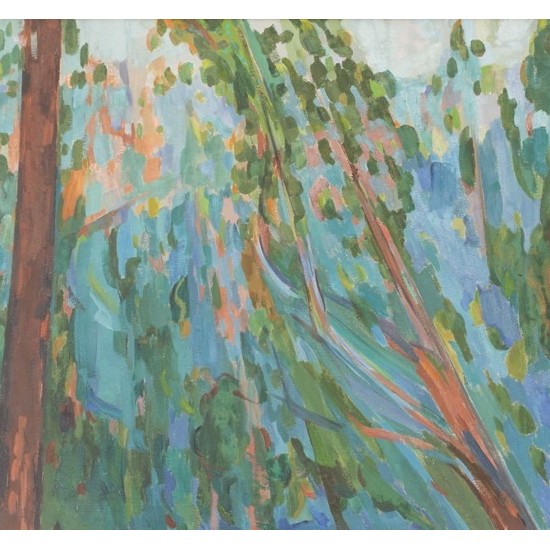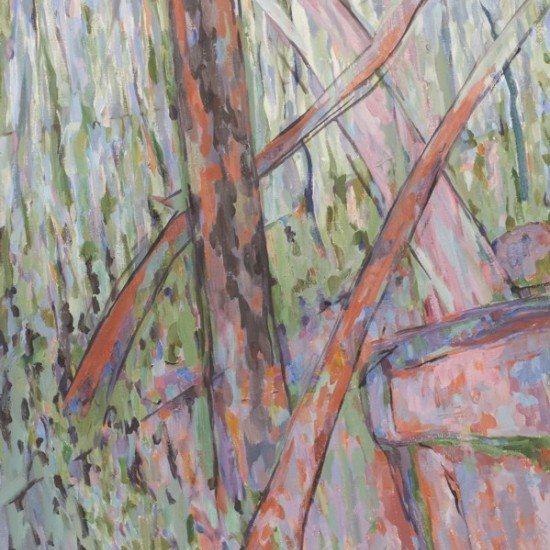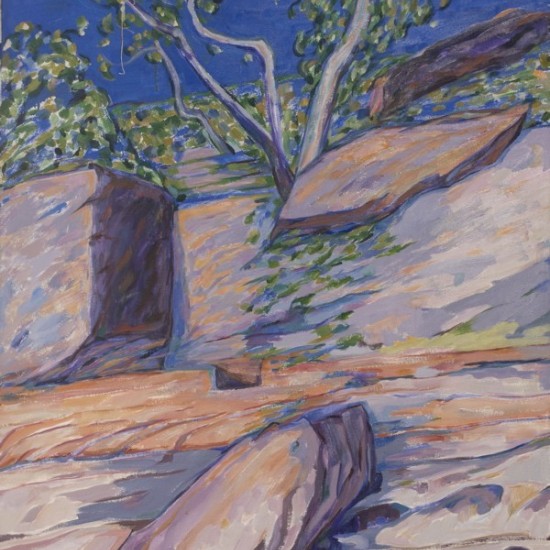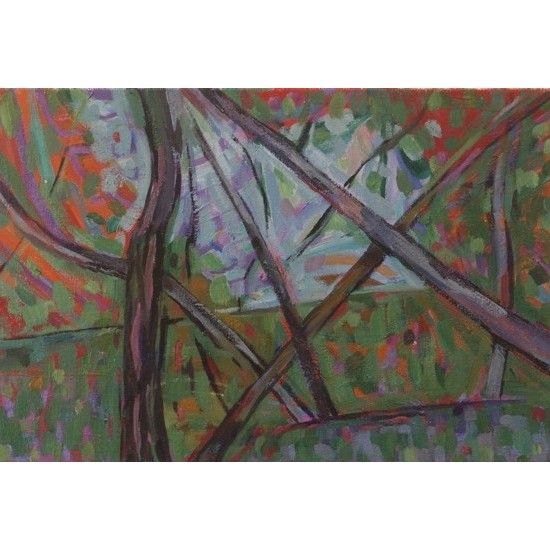Catalogue Essay - Dr. Ambrose Reisch
This Exhibition is a selection of the work of James Barker, highlighting a significant career spanning 60 years of professional practice.
James Barker’s grounding was at East Sydney Technical College in the early 50’s under the guidance of teachers including Douglas Dundas, Ron Millen, Godfrey Miller, Jean Appleton and Dorothy Thornhill. Along with the technical instructions of picture making and its history, James was exposed to the work and doctrines of the European modernists and Sydney Modernists. These were seminal influences that would stay with him. In 1955 in the year he completed his Diploma in Fine Arts he travelled briefly to Europe. On his return, in 1956 he was awarded a Fulbright scholarship. He again returned to Europe in 1957, where he worked and studied for over a decade. He returned in 1968 to Australia taking a teaching position at the National Art School and also at the University of Sydney with Dr Lloyd Rees. Later he taught with Lorna Nimmo at the University of N.S.W. He has held many solo exhibitions and been the recipient of many awards.
Barker stayed with painting as his definitive crucible throughout his artistic life. He emulated the modernists that he appreciated and looked outward in his search for subject matter. Here he chose landscape and interiors (still life) as a suitable subject for his painting pursuits. This allowed him to apply the formal pictorial concerns, about painting, as demonstrated by Cézanne and other modernists.
Painting was an aesthetic and intellectual dialogue with the surface. Modern Art had established an acceptance of the flatness of the picture plane and the challenge was, for the painter, to animate this surface with deference to its flatness. Barker does this with a deft application of marks and colours, of spaces and gestures. Formal pictorial elements, especially shape, line and colour, the composition, the structure and the playful representation of space all contributed to works that were defined more by their process than by the subject. Though these marks and gestures floated freely, there was an underlying structure that held it all together. Here he composed his painting with the same concerns of an architect, giving much consideration to structural and organisational strength.
In their quietest moments, Barker’s paintings offer us a refuge to contemplate. In a world of metadata, where all things collide, James Barker’s work is uncompromising in its deliberate singular focus. It draws one in to consider what a painting is, with its marks and its colours and how those thing suggest and define things that are known to us.



















































































James Barker
James Barker (1931-2019) a selection of works curated by Elisabeth Cummings and Damian Barker
June 2-July 17, 2020